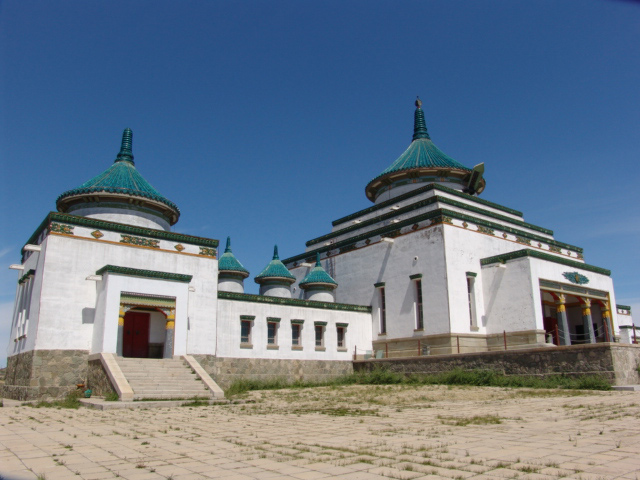 |
|
Genghis Khan |
Scientists at the University of California in San Diego (UCSD) are using advanced visualization technologies to locate the tomb of Mongolian emperor Genghis Khan, the UCSD said in a press release on Monday.
"As outrageous as it might sound, we're looking for the tomb of Genghis Khan," Dr. Albert Yu-Min Lin, an affiliated researcher for UCSD's Center for Interdisciplinary Science in Art, Architecture and Archaeology (CISA3), said in the release e-mailed to Xinhua.
With advanced visualization and analytical technologies available at the California Institute for Telecommunications and Information Technology (Calit2), Lin and his colleagues are hoping to pinpoint Khan's tomb and conduct a non-invasive archaeological analysis of the area where he is believed to be buried, according to the release.
 |
|
Temple of Genghis Khan |
Lin plans to establish a position at UCSD that will allow him to spearhead the three-year Valley of the Khans project, which will require 700,000 dollars in funding for eight researchers, including all expedition costs, said the release.
According to legend, Genghis Khan lies buried somewhere beneath the dusty steppe of Northeastern Mongolia, entombed in a spot so secretive that anyone who made the mistake of encountering his funeral procession was executed on the spot. Once he was below ground, his men brought in horses to trample evidence of his grave, and just to be absolutely sure he would never be found, they diverted a river to flow over their leader's final resting place.
Genghis Khan was one of the most exceptional men in all of history, but his life is too often dismissed as being that of a bloodthirsty warrior. Few people in the West know about his legacy- that he united warring tribes of Mongolia and merged them into one, that he introduced the East to the West making explorations like those of Marco Polo possible, that he tried to create a central world currency, that he introduced a written language to the Mongol people and created bridges that we still use today within the realm of international relations.
"But as great a man he was, there are few clues and no factual evidence about Genghis Khan's burial, which is why we need to start using technology to solve this mystery," Lin said.
Khan's grave is presumably in a region bordered by Mongolia's Onon River and the Khan khentii mountains near his birthplace in Khentii Aimag, and some experts believe his sons and other family members were later buried beside him.
Directly following Khan's death in 1227, the area around his tomb was deemed forbidden by the emperor's guards, and later in the 20th century, by strict Russian occupation, which prohibited Mongolians from even talking about Genghis Khan because they felt it might lead to nationalist uprising. Only since the 1990s have researchers been allowed in the area, and several other research teams have tried unsuccessfully to locate the tomb.
Lin said hopes of success are based on his access to unparalleled technology at Calit2 and CISA3 to pinpoint the area where Khan might have been laid to rest, find the tomb itself and then develop a virtual recreation of it using various methods of spectral and digital imaging.
Explained Lin: "If you have a large burial, that's going to have an impact on the landscape. To find Khan's tomb, we'll be using remote sensing techniques and satellite imagery to take digital pictures of the ground in the surrounding region, which we'll be able to display on Calit2's 287-million pixel HIPerSpace display wall."
"Once we've narrowed down this region in Mongolia to a certain area," Lin continued, "we'll use techniques such as ground penetrating radar, electromagnetic induction and magnetometry to produce non-destructive, non-invasive surveys. We'll then work with people in UCSD's electrical engineering department to develop visual algorithms that will allow us to create a high-resolution, 3-D representation of the site."
(Xinhua News Agency October 24, 2008)